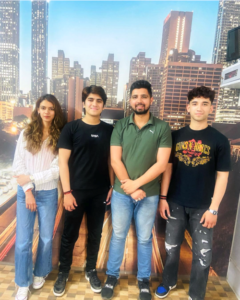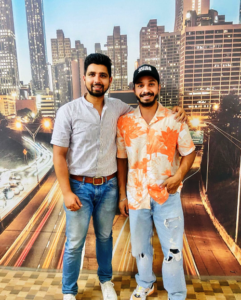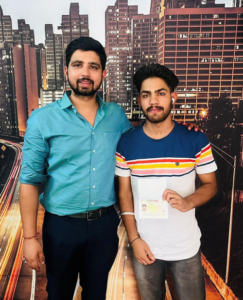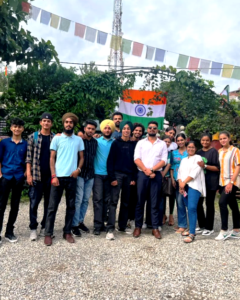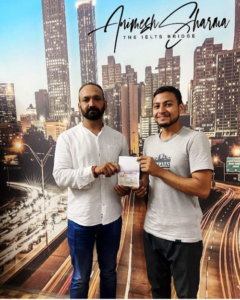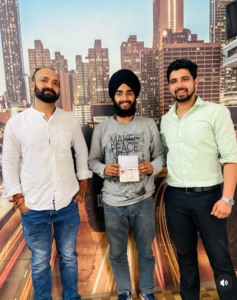READING PASSAGE 1
You should spend about 20 minutes on Questions 1-13, which are based on Reading Passage 1 below.
The animal that regrows its head
In a windowless lab at the University of Galway in Ireland, there’s a fish tank containing an extraordinary creature. Perched on blue cocktail sticks like lollipops, rows of seashells are coated in a strange “living hair”, buffeted by gently flowing seawater. This colony of tiny marine animals – known as “snail fur” – was harvested in Irish rockpools off the backs of hermit crabs, and is related to jellyfish, corals and sea anemones.
Each no bigger than a baby’s eyelash, they are called Hydractinia, and up close resemble a tree, each with a foot, a trunk and a tentacled head used for catching tasty passing detritus. They also have a superpower: when grazing fish frequently bite off those tentacle heads, they re-sprout to their former hirsute glory within a week.
The following picture depicts how Hydractinia can grow back a new head
It’s this talent that has captured the attention of Uri Frank and colleagues at Galway’s Regenerative Medicine Institute. Along with a growing number of researchers, he claims that the tissue regeneration seen in creatures like Hydractinia could be an ancient power possessed by most animals, including humans – it’s just dormant. So, how does this “snail fur” regrow itself? And could it hold the key to tissue regeneration in human beings too?
Many animals can regenerate body parts, from starfish to salamanders. But primitive snail fur is unusual, not least because its abilities are so extreme.
Marshalling stem cells
The key to Hydractinia’s regenerative talent is the fact that it retains its embryonic stem cells for life. This means that any wound healing process doesn’t just produce a scab and a scar but a whole new body part as it would in an embryo, even a head.
At a gathering of developmental biologists earlier this year, Frank showed a video of the creature’s head-budding process in action, embryonic stem cells that had been genetically altered to glow green rushing to the neck end of a headless Hydractinia. Attendees were agog. As one tweeted: “Uri Frank shows timelapse movie of Hydractinia stem cells physically moving across to head (wound site) – Wow!”
Since recording that video the Galway team have been working to understand how Hydractinia rebuilds its severed body and hope to publish their findings shortly in a scientific journal. While they’re keeping schtum about the details, the paper will focus on how the creature marshalls its stem cells to regrow its head – for example, how stem cells know the head’s missing – and where exactly the embryonic stem cells come from.
Studying Hydractinia has also led Frank and colleagues to ask a bigger question: why can only a few animals regenerate while most can’t? A salamander can regrow a lost tail but closely related frogs can’t regrow a lost limb. And if a tiny marine creature can regrow its own head, why can’t humans even regrow their adult teeth? After all, says Frank, it’s not as if human and Hydractinia stem cell systems are so very different.
Ancient ancestor
Key stem cell processes are ancient and common to many animal species. For instance, the complex “Wnt” signalling system, which controls stem cells in developing embryos and, when uncontrolled, causes cancer, is very similar in all animals, including Hydractinia and people. It’s one of a handful of complex stem cell systems, each involving hundreds of elements, which have remained the same since Hydractinia branched off the evolutionary tree that eventually led to us around 600 million years ago.
Over the past decade or so, researchers have started to believe that stem cells first evolved in a creature even more ancient than Hydractinia, whose soft body has long since dissolved in ancient seabeds. In this as-yet-unknown creature, the power of regeneration may have first evolved, says Frank, endowing all later animals with a basic toolkit for regrowing lost body parts – one which mainly lies dormant in present-day life.
“It’s maybe not such a crazy idea. Stem cell systems are enormously complex and 600 million years may not be long enough to reinvent another system from scratch. So it’s more likely to believe that our stem cell system and Hydractinia’s stem cell system were actually inherited from a common ancestor,” says Frank. “And if you think about it, Hydractinia can grow a new head and, although we cannot as adults, we can do that as embryos when we make our own head. So it is possible that this ability to do so is switched off in human adults and in Hydractinia it’s not.”
This theory ties in with a study published last year in the journal Nature, about two varieties of an ancient form of flatworm, the planarian. This worm has been studied for over a century because of its amazing regenerative powers. Slice them up into tiny pieces and some planarian worms can regrow their bodies from even the tiniest tailpiece. Others need most of their body intact to regrow a head. Until now, that is.
Researchers at the Max Planck Institute tested the idea that all planarian flatworms have the same regenerative superpowers but that in some it’s switched off early in development. They were right. With a relatively simple tweak to the stem cell system of a developing embryo they turned a creature that in nature couldn’t regrow a head out of a tiny tailpiece, into one that could.
In Galway, Frank hopes his research will help to explain the apparently miraculous results from planarian experiments and unravel other mysteries, too. Why, for instance, do planarians easily grow new tails when Hydractinia struggles to regrow its foot? One idea is that body symmetry – front/back or left-right as in planarians and humans but not snail fur – may dictate where stem cells in the body can migrate to.
In theory, it’s possible that humans may harbour the same dormant regenerative superpowers as snail fur and flatworms, however far they seem from humans. At the most basic cellular level there are striking similarities. Studying them could teach us how to regrow damaged or lost body parts too. “While there’s no market for regrowing human heads,” says Frank, “wouldn’t it be great if we could repair spinal cords, damaged hearts, damaged kidneys, hands and any other organs we might lose?”
The flatworm studies imply this might not be quite as unthinkable as once thought. The Victorian father of regenerative science, Thomas Hunt Morgan carried out flatworm experiments showed their amazing powers to regrow a whole body from a stump in 1901. But he abandoned the study, writing: “We will never understand the phenomena of development and regeneration.”
Clearly, there are many mysteries of regeneration still to be revealed, yet now it seems that a tiny creature living in a fish tank in Galway and its ilk could help us unlock the bizarre process of regrowing body parts sooner than we thought.
Questions 1-5
Do the following statements agree with the information in the IELTS reading text?
In boxes 1-5 on your answer sheet, write
TRUE if the statement agrees with the information
FALSE if the statement contradicts the information
NOT GIVEN if there is no information on this
1. “Snail fur” is related to jellyfish, corals and sea anemones. TRUE FALSE NOT GIVEN
2. Judging by the picture, Hydractinia can regrow its head in a day. TRUE FALSE NOT GIVEN
3. Uri Frank thinks that even humans can possess regenerating powers. TRUE FALSE NOT GIVEN
4. Snail fur is similar to salamnders and starfish. TRUE FALSE NOT GIVEN
5. Healing in Hydractinia produces new body part. TRUE FALSE NOT GIVEN
Questions 6-9
Choose the correct letter, A, B, C or D.
Write the correct letter in boxes 6–9 on your answer sheet.
6. Which of the following DIDN’T happen at a gathering of developmental biologists?
- Uri Frank showed a video of Hydractinia regenerating its head.
- Some stem sells of the creature were glowing green.
- Attendants were astonished by the show.
- Research conference afterwards took place.
7. The Galway team will focus on what in their future paper?
- How Hydractinia manages to regrow its head.
- How stem cells know that the head is missing.
- Where the stem cells come from.
- All of the above.
8. According to Frank Uri and his team
- human and Hydractinia stem cells are similar.
- most organisms can regenerate themselves.
- frogs can regrow lost limbs.
- salamander and frogs are not closely related.
Questions 9-13
Complete the sentences below.
Write ONLY ONE WORD from the passage for each answer.
Write your answers in boxes 9-13 on your answer sheet.
9. “Wnt” signalling system can cause if uncontrolled.
10. Human and Hydractinia stem cells might actually be from a common .
11. The thing that dictates where stem cells in the body can migrate tomight be body .
12. Humans might possibly harbour the same regenerative superpowers as snail fur and flatworms.
13.Thomas Hunt Morgan said that we will never understand the of development and regeneration.


